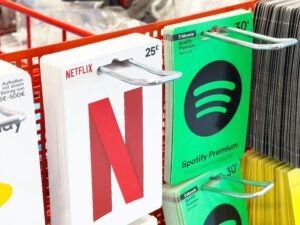“On TV & Video” is a column exploring opportunities and challenges in advanced TV and video.
Today’s column is by Jeremy Fain, CEO and co-founder of Cognitiv.
For the past two years, the pandemic has significantly impacted almost every part of our daily lives.
In the advertising industry, we’ve seen events, including Cannes and CES, move to virtual or hybrid content. We’ve experienced the great agency resignation. We’ve watched the evolution of remote work unfold.
Yet, despite upheaval, ad tech continues to thrive. That is, in part, because connected digital content has been essential for getting consumers through lockdowns.
Escaping into mobile games, OTT video content or platforms that host online communities hasn’t just been a trivial distraction. Rather, those environments have provided meaningful refuge in a profoundly challenging time. In that context, programmatic has continued to surge and reshape the digital landscape – that trend will only continue.
Programmatic is a multifaceted entity with broad application and potential. Here’s what we can expect as it matures.
Accelerated growth will push CTV out of the Wild West
There has been no shortage of coverage on the growth of CTV as linear TV dollars shift into the channel. However, it’s still a channel that is hard to measure centrally.
Marketers have thrown their money into CTV knowing it’s the correct channel to reach their target audiences, but they’re doing this with the hope of reaching people and no real accountability of where their money is going. That’s the antithesis of what modern ad tech should be.
Currently, the biggest problem for CTV is that marketers are still buying loads of impressions, not knowing where their ads turn up or how those ads track back to new business. This is the year marketers are going to demand more measurement and attribution.
Direct-to-consumer marketing dollars will flee social
Social media has had a massive impact on advertising over the past few years, but its influence may be waning. Facebook’s “blackout” last year, along with Apple’s iOS update, demonstrated a major weakness in the company’s platforms. Not only did businesses lose millions of dollars, but customer acquisition costs have also jumped.
Meanwhile, the wave of VC funding that supported DTC’s social focus has slowed rapidly. This has led to a renewed focus on the need for a profitable customer acquisition model. It has also pushed DTC brands to diversify to find lower CAC partners.
Still, DTC isn’t going away. Rather, it’s adapting to increasingly holistic and mature marketing strategies. That holistic approach also applies to data, where there is increasing recognition that your own data in isolation does not paint a complete picture. Embracing a wider range of both advertising platforms and data sources will go hand in hand.
In short, the era of having your marketing dollars in one basket is coming to an end.
Marketers will invest more in AI and custom algorithms
For some marketers, AI still seems like a far-removed and bewildering concept. But just as you don’t have to know how to build a car to be able to drive one, AI technologies bring advertisers and marketers remarkable gains without demanding the knowledge of an experienced AI engineer.
That’s evident in AI’s current presence in our everyday lives. AI and deep learning are everywhere from self-driving cars to voice activation on our smartphones. Most of us can’t get by in our daily lives without some form of AI, even if we’re blissfully unaware of the technology’s inner workings.
One-to-one marketing has long been a talking point, and once upon a time it felt futuristic. But we’re getting to the point where deep learning is an accessible and effective tool in a marketer’s toolkit.
What’s next: accountability drives acceleration
Over the next few months, the evolution of programmatic will bring increased maturity, accountability and a coming together of technology and standards that offer realistic, everyday gains.
Already, there’s a great deal of untapped potential to better connect brands with audiences.
Follow Cognitiv (@TeamCognitiv) and AdExchanger (@adexchanger) on Twitter.














